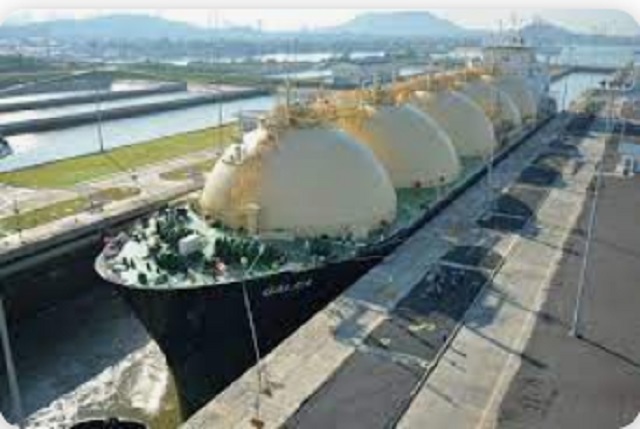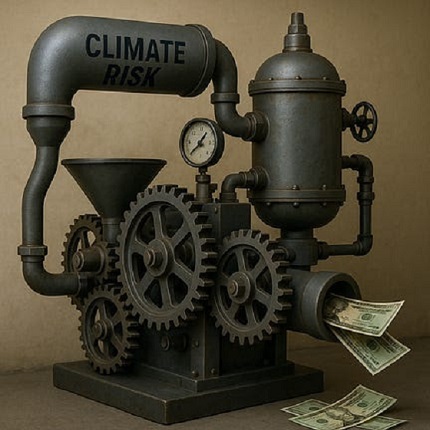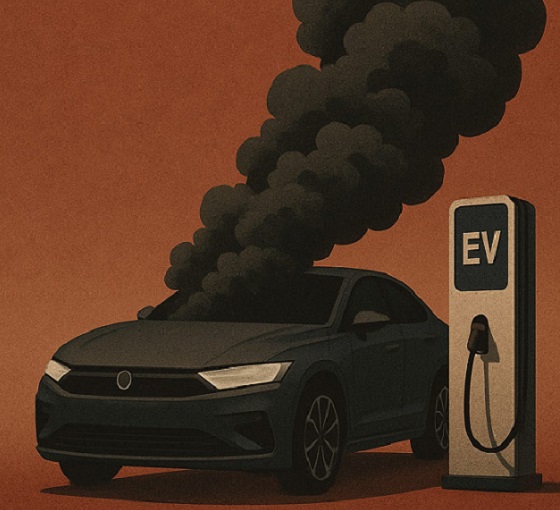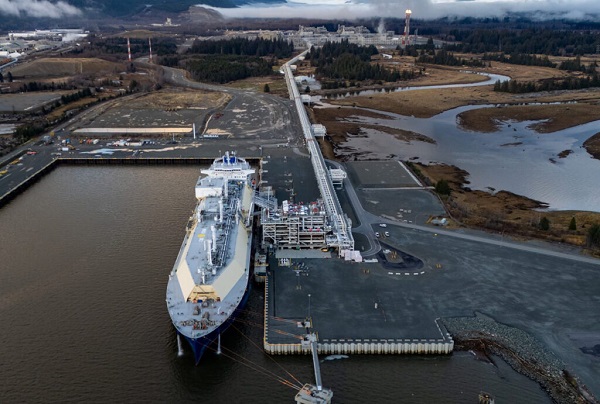Business
PETER SUTHERLAND SR GENERATING STATION POWERS NORTHEAST ONTARIO

PETER SUTHERLAND SR GENERATING STATION POWERS NORTHEAST ONTARIO
On the Abitibi River in northeastern Ontario, the Peter Sutherland Sr. Generating Station (GS) powers 25,000 homes and businesses with renewable waterpower. The development was a partnership between Ontario Power Generation (OPG) and Coral Rapids Power: a wholly-owned company of the Taykwa Tagamou Nation (TTN). The development is named after a respected elder from TTN. The $300-million project was completed in 2017.
On the Abitibi River in northeastern Ontario, almost two years of construction and eight years of planning have culminated in a new hydroelectric station capable of powering 25,000 homes and businesses with clean, renewable, and affordable power.
The 28-megawatt (MW) Peter Sutherland Sr. Generating Station (GS), located about 80 kilometres north of the town of Smooth Rock Falls on the New Post Creek, went into service on April 2017, well ahead of its scheduled 2018 target. In addition, the $300- million project stayed on budget.
That’s a testament to the solid planning and execution between OPG and its partner in the development, Coral Rapids Power, a wholly-owned company of the Taykwa Tagamou Nation (TTN). The development, which is named after a respected elder from TTN, has already had a positive impact on the First Nation community.
“We had about 50 TTN members working on the project at one point or another, which was significant for our First Nation partner,” said Paul Burroughs, Project Director at OPG. “They were part of the project team working to help make this a success.”
As part of the project agreement, Coral Rapids Power has a one-third ownership in the facility, meaning they will receive a share of profits from the station and be a partner for life over the 90 or so years the plant is expected to operate. As TTN’s first foray into hydro development, the project took several decades to get off the ground before the First Nation agreed to partner with OPG in 2007 as part of a past grievances settlement. Construction of the station began in 2015.

Construction work on the Peter Sutherland Sr. Generating Station
The project provides the TTN community with a long-term investment opportunity and a sustainable economic base. Further, it provides spinoff benefits for the entire northeast region.
“The relationship we’ve built with OPG is based on a foundation of respect, trust, and all working toward a common goal,” said Wayne Ross, President of Coral Rapids Power. “There have been many benefits from this project for our community, including good-paying jobs, transferable skills and a long-term revenue stream.”
In addition, approximately $53.5 million in subcontracts were awarded to TTN joint- venture businesses during the construction phase of the station.
“The partnership is about creating a lifelong relationship with the First Nation,” said Burroughs.
The project has created skilled jobs and unique learning opportunities benefitting TTN members who will pursue work in a range of different career fields. Labour needs included engineers, equipment operators, labourers, drillers, cement workers, ironworkers, electricians, welders, carpenters, and camp support services.
At the peak of construction, there were about 220 workers employed on the project, many of whom reside in the local community.
“Our partnership is about more than just megawatts,” said Mike Martelli, President, Renewable Generation. “It’s also about creating skilled jobs and ongoing revenue that will benefit this community for years to come.”
In addition to the direct employment opportunities, existing local businesses and the regional economy benefitted from contracting work, as well as local project purchasing and expenditures. The estimated sales multiplier associated with the project is $1.50 – that is for every dollar expended an additional $0.50 was spent in northern Ontario.
The new station is operated by OPG’s northeastern operations control room in Timmins and is maintained by technicians located at a nearby work centre at Abitibi Canyon.

Inside the completed Peter Sutherland Sr. Generating Station
Peter Sutherland Sr. GS is the latest asset in OPG’s clean energy portfolio, which includes successful joint ventures with other First Nations. In early 2015, OPG and the Moose Cree First Nation celebrated the completion of the Lower Mattagami Hydroelectric Project, northern Ontario’s largest hydroelectric project in 50 years.
Ontario’s 58 northeastern hydroelectric facilities provide a clean, renewable, and reliable source of power to Ontarians year- round. Their combined capacity is over 3,000 MW.

Thanks to Todayville for helping us bring our members’ stories of collaboration and innovation to the public.
Click to read a foreward from JP Gladu, Chief Development and Relations Officer, Steel River Group; Former President and CEO, Canadian Council for Aboriginal Business.

JP Gladu, Chief Development and Relations Officer, Steel
River Group; Former President & CEO, Canadian Council for Aboriginal Business
Click to read comments about this series from Jacob Irving, President of the Energy Council of Canada.

Jacob Irving, President of Energy Council of Canada
The Canadian Energy Compendium is an annual initiative by the Energy Council of Canada to provide an opportunity for cross-sectoral collaboration and discussion on current topics in Canada’s energy sector. The 2020 Canadian Energy Compendium: Innovations in Energy Efficiency is due to be released November 2020.
Click below to read more stories from Energy Council of Canada’s Compendium series.
INDIGENOUS CONSULTATION AND ENGAGEMENT AT CANADA’S ENERGY AND UTILITY REGULATORS
Hydro-Québec takes partnerships, environmental measures and sharing of wealth to new levels
Local Business
Red Deer Downtown Business Association to Wind Down Operations

The Downtown Business Association (DBA) Board of Directors has made the decision to wind down the Association’s operations at the end of 2025.
The Board determined that the Association is no longer able to operate sustainably under the financial framework available for 2026. After exploring all reasonable alternatives, the Board concluded that it could not continue without reducing services to a level that would no longer provide meaningful value to levy-paying businesses.
The DBA does not receive any operating funding from City Hall in a regular year, all funds raised are through Business Improvement Area Levy that consists of a mandatory levy placed on all businesses operating within the Business Improvement Area. These funds are legislated under the Municipal
Government Act, to be used to promote the Business Improvement Area, which is achieved through marketing and event initiatives along with providing advocacy support primarily to local government on behalf of the business community.
In recent years, the DBA has been a committed advocate for re-examining the approach to Downtown Governance. The Board has consistently maintained that the responsibility for funding downtown initiatives in such a socially charged environment should not rest solely with the business community.
Despite their efforts, the DBA recognized that the funds generated through the Business Improvement Area Levy were insufficient to effectively address the growing challenges of the current operating environment. This ongoing financial strain highlighted the need for a more equitable and sustainable
model to re-establish the downtown as a safe and welcoming heart of the city.
At the annual DBA budget presentation to City Hall, the DBA requested the essential funding needed to implement the Greater Downtown Governance Committee’s recommendations — work that the DBA is uniquely positioned to lead and has been delivering despite depleting resources for many years. The request was not approved. Instead, The City offered a one-time $100,000 Grant-in-Lieu, paired with a proposed 60% increase to the Business Improvement Area levy in 2026.
After careful analysis, the Board concluded that increasing the levy would place undue strain on already challenged businesses and compromise the DBA’s role as a trusted advocate. Operating with the reduced funding of $225,000 would require further staff reductions in an already under resourced environment and a significant reduction in programs, making it impossible to deliver the level of support that downtown businesses deserve and vitally need.
Beginning January 1, 2026, the City of Red Deer will become the primary contact point for matters previously supported by the DBA, including downtown support programs, business-district coordination, events, safety and cleanliness support, and stakeholder engagement. The DBA will work with City staff to support a smooth transition.
The DBA will continue to provide Clean Team services through the delivery of the City-funded environmental contract until February 1st, 2026.
Quote from CEO, Amanda Gould:
“To our business community, we have always operated with your best interests in our heart, continually driving the vision of a thriving downtown environment that serves every member of our community. The changes ahead will have a significant impact on downtown, as there will no longer be an organization dedicated to ensuring the downtown remains top-of-mind, leading events, marketing initiatives, or advocating on your behalf. It is likely you will experience less coordinated support and collective representation.
After 13 years of service to you and our beautiful downtown, it is with great personal sadness that we find ourselves here, but our message remains clear – addressing the unique challenges of our downtown should not rest solely on your shoulders. We cannot, in good faith, collect a levy that does not enable us to provide the essential services needed for our evolving downtown landscape”.
Quote from DBA Board Chair, Brandon Bouchard:
“The incredible staff at the Downtown Business Association have consistently delivered on their mandate with outstanding dedication and effectiveness. Through their efforts, they have successfully promoted the downtown area, organized impactful marketing and event initiatives, and provided steadfast
advocacy support for the business community. Their work has extended well beyond the legislated requirements, as they have proactively responded to the evolving needs of downtown businesses, adapting to challenges and supporting operations within a complex and changing environment.
Despite the staff’s relentless commitment to positioning the DBA as an effective leader for downtown interests, the absence of a sustainable funding model has made it impossible to continue delivering meaningful support. The Board cannot, in good conscience, propose a levy that does not enable the
Association to meet the required level of service, address the shifting priorities of the business community, or respond to the continually evolving needs of the downtown”.
Agriculture
Growing Alberta’s fresh food future

A new program funded by the Sustainable Canadian Agricultural Partnership will accelerate expansion in Alberta greenhouses and vertical farms.
Albertans want to keep their hard-earned money in the province and support producers by choosing locally grown, high-quality produce. The new three-year, $10-milllion Growing Greenhouses program aims to stimulate industry growth and provide fresh fruit and vegetables to Albertans throughout the year.
“Everything our ministry does is about ensuring Albertans have secure access to safe, high-quality food. We are continually working to build resilience and sustainability into our food production systems, increase opportunities for producers and processors, create jobs and feed Albertans. This new program will fund technologies that increase food production and improve energy efficiency.”
“Through this investment, we’re supporting Alberta’s growers and ensuring Canadians have access to fresh, locally-grown fruits and vegetables on grocery shelves year-round. This program strengthens local communities, drives innovation, and creates new opportunities for agricultural entrepreneurs, reinforcing Canada’s food system and economy.”
The Growing Greenhouses program supports the controlled environment agriculture sector with new construction or expansion improvements to existing greenhouses and vertical farms that produce food at a commercial scale. It also aligns with Alberta’s Buy Local initiative launched this year as consumers will be able to purchase more local produce all year-round.
The program was created in alignment with the needs identified by the greenhouse sector, with a goal to reduce seasonal import reliance entering fall, which increases fruit and vegetable prices.
“This program is a game-changer for Alberta’s greenhouse sector. By investing in expansion and innovation, we can grow more fresh produce year-round, reduce reliance on imports, and strengthen food security for Albertans. Our growers are ready to meet the demand with sustainable, locally grown vegetables and fruits, and this support ensures we can do so while creating new jobs and opportunities in communities across the province. We are very grateful to the Governments of Canada and Alberta for this investment in our sector and for working collaboratively with us.”
Sustainable Canadian Agricultural Partnership (Sustainable CAP)
Sustainable CAP is a five-year, $3.5-billion investment by federal, provincial and territorial governments to strengthen competitiveness, innovation and resiliency in Canada’s agriculture, agri-food and agri-based products sector. This includes $1 billion in federal programs and activities and $2.5 billion that is cost-shared 60 per cent federally and 40 per cent provincially/territorially for programs that are designed and delivered by provinces and territories.
Quick facts
- Alberta’s greenhouse sector ranks fourth in Canada:
- 195 greenhouses produce $145 million in produce and 60 per cent of them operate year-round.
- Greenhouse food production is growing by 6.2 per cent annually.
- Alberta imports $349 million in fresh produce annually.
- The program supports sector growth by investing in renewable and efficient energy systems, advanced lighting systems, energy-saving construction, and automation and robotics systems.
Related information
-

 Great Reset2 days ago
Great Reset2 days agoSurgery Denied. Death Approved.
-

 Business1 day ago
Business1 day agoCanada Can Finally Profit From LNG If Ottawa Stops Dragging Its Feet
-

 Business2 days ago
Business2 days agoThe Climate-Risk Industrial Complex and the Manufactured Insurance Crisis
-

 Health2 days ago
Health2 days agoThe Data That Doesn’t Exist
-

 National1 day ago
National1 day agoLiberal bill “targets Christians” by removing religious exemption in hate-speech law
-

 Crime1 day ago
Crime1 day agoInside the Fortified Sinaloa-Linked Compound Canada Still Can’t Seize After 12 Years of Legal War
-

 Automotive8 hours ago
Automotive8 hours agoThe $50 Billion Question: EVs Never Delivered What Ottawa Promised
-

 Energy1 day ago
Energy1 day agoLNG NOW! Canada must act fast to prosper in changing times




